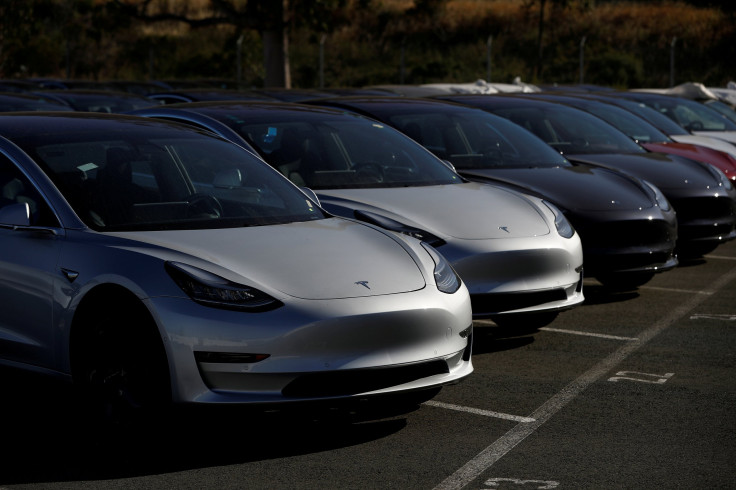Tesla Model 3: More Signs Of Weak Demand For The Priciest Versions

Tesla (NASDAQ:TSLA) finally seems to be fixing its early production hiccups for the highly anticipated Model 3 sedan. The electric-car pioneer produced more than 5,000 Model 3s in the final week of the second quarter. While Tesla isn't yet capable of sustaining that level of output, by the end of the third quarter, it may be able to build as many as 6,000 Model 3s per week.
This article originally appeared in the Motley Fool.
However, supply constraints should no longer be the No. 1 worry for Tesla investors. A bigger concern is that Tesla could quickly run through much of the demand for its priciest -- and thus most profitable -- Model 3 configurations. That's a problem because it isn't clear that Tesla can make money building a basic $35,000 Model 3.
Tesla opens up Model 3 ordering and adjusts lead times
In the past week, Tesla investors have gotten two disturbing signals that demand for pricier versions of the Model 3 may not be as strong as many bulls expected.
First, Tesla announced a week ago that anyone in the U.S. or Canada can now configure and order a Model 3, as long as they want the long-range battery and premium interior options at a minimum. Previously, Tesla was only taking orders from customers who had put down $1,000 to reserve a spot in line. (Tesla currently says that the standard-battery Model 3 will be available in six to nine months -- that is, early 2019.)
Second, just within the past few days, Tesla reduced the estimated lead times for Model 3 orders by one to two months. It projects that dual-motor performance models and rear-wheel-drive models ordered today will be delivered in one to three months, while dual-motor models without the performance upgrade will be delivered in two to four months. (All three of these versions include the long-range battery.)
The premium backlog is running low
Together, these two developments indicate that most Model 3 reservation holders want to pay the bare minimum -- or close to it -- for their cars. As of the end of the first quarter, Tesla reported having more than 450,000 net reservations for the Model 3. Tesla built 28,578 Model 3s last quarter, and assuming that it builds an average 5,000 per week during the third quarter -- which seems like a best-case scenario -- it would churn out another 65,000 during that three-month period.
Thus, Tesla is likely to build fewer than 100,000 Model 3s during the second and third quarters combined. Based on the updated lead times for new orders, it appears that the backlog of orders for the premium Model 3 versions that Tesla is currently building will run out around the end of the quarter. By the fourth quarter, Tesla will be building Model 3s primarily (or even exclusively) for customers who weren't on the reservation list.
In other words, of the greater than 450,000 Model 3 reservations that Tesla had on the books a few months ago, no more than 100,000 have converted to orders. The other 350,000 reservation holders are waiting for cheaper Model 3s to become available -- or have decided to cancel their reservations.
Reducing production costs will be key to Tesla's future
Over the past year, many Tesla bears have warned that the company will face a huge increase in competition as rival automakers roll out a slew of electric car models. However, while there's a grain of truth in this argument, Tesla has legions of fans across the world who see the company as different from other automakers. These fans don't want electric cars: They want Teslas.
The bad news for Tesla is that most of its fans can't afford its products. The Model 3 -- Tesla's "affordable" car -- currently has a starting price of $49,000 and a top price of $80,000.
Even with its plans to exclusively build the most expensive Model 3 variants at a relatively high rate, Tesla expects Model 3 gross margin to reach just 20 percent in the second half of 2018. If Tesla's production mix shifts drastically toward cheaper Model 3s in 2019 -- because many customers are already stretching to pay $35,000 to $40,000 for a car -- gross margin could recede again.
Tesla needs to reach its 25% gross margin target to support its investments in new models and additional production capacity. As a practical matter, this means that it must radically cut Model 3 production costs over the next few quarters. Unless it can do so, all the demand in the world for $35,000 Model 3s won't be enough to snap Tesla stock out of its recent funk.
Adam Levine-Weinberg has no position in any of the stocks mentioned. The Motley Fool owns shares of and recommends Tesla. The Motley Fool has a disclosure policy.





















